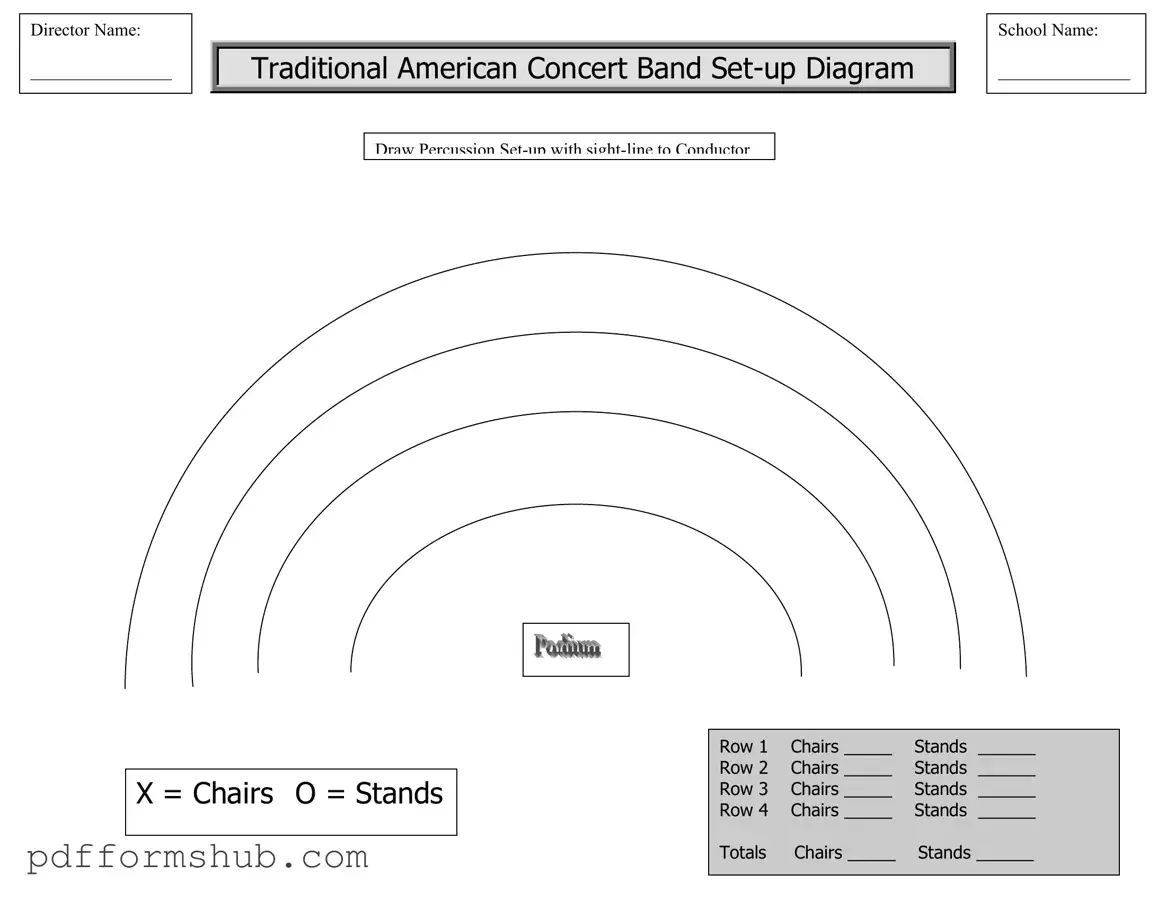The Band Seating Chart form serves as an essential tool for music directors, providing a structured approach to organizing musicians in a concert band setting. This form captures critical details such as the director's name, the school’s name, and the performance date and time. It includes a traditional American concert band setup diagram, which allows directors to visualize the arrangement of chairs and music stands across multiple rows. Each row is designated for specific instruments, ensuring that musicians are positioned for optimal sight lines to the conductor. For instance, Row 1 typically accommodates flutes, while subsequent rows are allocated to clarinets, brass instruments, and percussion. The form also emphasizes the importance of maintaining the designated percussion setup, which must remain consistent to facilitate effective performance. Additionally, the totals for chairs and stands are compiled at the bottom of the form, providing a quick reference for the overall setup. To ensure timely preparations, the form must be faxed to the designated contact prior to the specified deadline. This systematic approach not only aids in the logistical aspects of staging a concert but also enhances the overall performance experience for both musicians and audiences alike.
